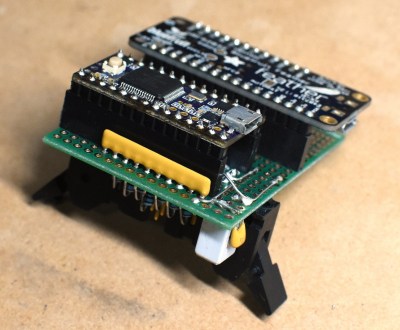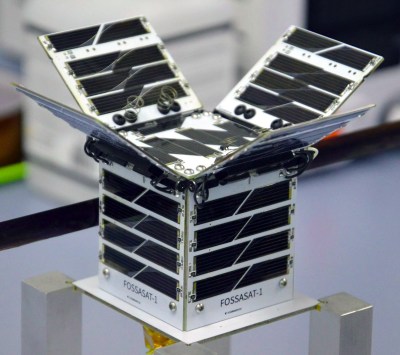We love seeing the astonishing array of projects large and small entered into Hackaday contests which push the boundaries of what is possible. Our latest has been the Connected World contest which was announced back in June, and today we’re pleased to bring you its four top winners. As a recap, the brief was to create something that connects wirelessly and shows a blend of creativity and functionality. The final four have a diverse range of applications, and here they are with their respective categories:
Best Project: Hive Tracker
Watchers of the gaming hardware scene may be familiar with the HTC Vive Tracker virtual reality position feedback system in which an infra-red laser scans a scene and is picked up by a handheld device to measure its position at a milimetric level. HiveTracker takes the Vive Tracker’s sensor and miniaturises it, with a central board containing a Nordic NRF52 RF-enabled microcontroller, and four satellite boards containing Triad TS4231 laser tracking chips.
The original intention was to use an FPGA for the processing, but clever use of a peripheral interface mode on the Nordic chip allowed them to dispense with it.
Best Design: Fossasat Open Source Satellite
Think for a moment to the most ambitious project you might attempt… it’s possible that you couldn’t set your sights higher than space. That’s what the Fossa Systems team from Spain have done with FossaSat-1, an open-source pocketqube picosatellite that is to be launched with its total budget for both development and launch to be only 30,000 Euros. Like many of these tiny satellite designs it will be constructed from FR4 PCB material, and features both an ATmega328AU processor and a LoRa radio. It has a set of solar panels that are concealed within its 50mm-sided cube at launch, but will fold out to give it extra power in flight. Its payload will be student projects using an ATmega1284 processor.
Best Documentation: Domsnif Dot Matrix

Many devices now contain a microprocessor, but do their job without any computer interface at all. Extracting their data can present a near-impossible challenge requiring complete reverse engineering. There is often something of a backdoor which can be used to circumvent the need for such work, and it comes in the form of the device’s LCD display.
Since many of these devices use known protocols it can become a relatively straightforward task to read the data being sent to them if you can gain access to their interface connector. This is the approach taken by DoMSnif, which hooks up to an LCD interface, decodes its signals, and offers the data to the wider world over a Bluetooth connection. As it stands in prototype form it uses a Teensy to retrieve the data and …read more
Source:: Hackaday

